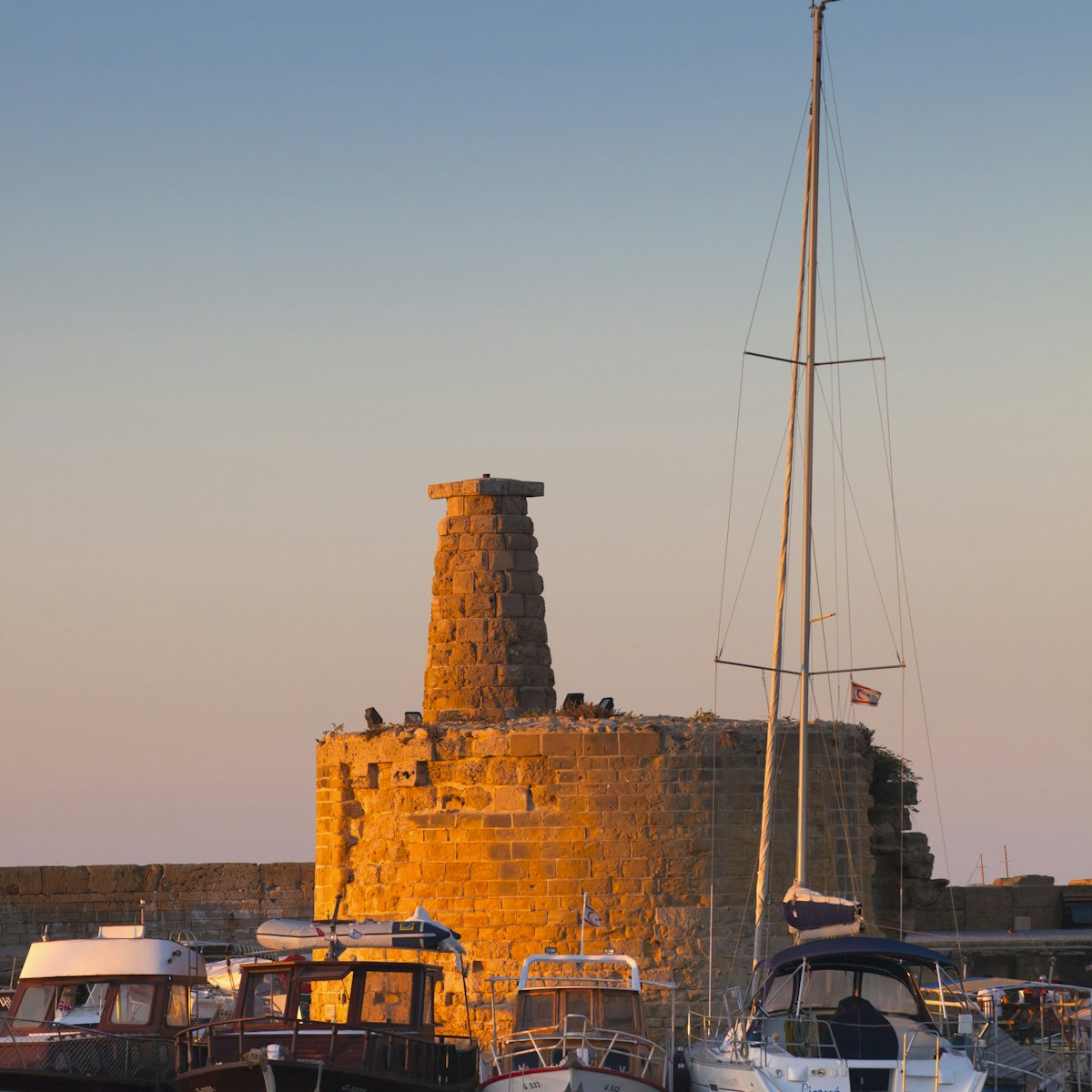
If the grand fortifications of Kyrenia Castle could talk, they could sure tell some tales. The castle was first built by the Byzantines – possibly over the remains of an earlier Roman fort – and every era of conquerors from Richard the Lionheart to the Ottomans has added its own touch to the castle's bulk.
A large rectangular structure, the castle contains a cistern, dungeon, chapel and two small museums, though the real highlight is walking along the ramparts high above the harbour.
You enter the castle via the stone bridge over the former moat, which leads to the small 12th-century Byzantine Chapel of St George. Its broken mosaics and Corinthian columns, originally outside the walls, were incorporated into the larger structure by the Venetians.
The western side of the inner castle is home to the infamous dungeon where King Peter I’s pregnant mistress, Joanna L’Aleman, was tortured by order of the king’s jealous wife, Queen Eleanor. You can peer down into the deep hole where a hilariously bad mannequin representing the unfortunate Joanna is displayed.
Across the courtyard, the northeast Lusignan bastion tower features mannequins dressed in armour. The Venetian bastion tower is in the southeast corner. Between the towers are two small museums. The Gallery of Tomb Finds holds a small collection of finds from surrounding archaeological sites, including the Neolithic site of Vrysi (near Çatalköy) and the Kirni Bronze Age tombs (in Pınarbaşı). There's also an exhibit of Hellenistic-period ceramics unearthed at Akdeniz (Ayia Irini).
Next door, the Kyrenia Shipwreck Museum contains the remains of the oldest shipwreck recovered from Cypriot waters. This wooden-hulled (Aleppo pine) Greek merchant ship sank off the Kyrenia coast around 300 BC, and was discovered by a local diver in 1967. Its cargo consisted of amphorae, almonds, grain, wine and millstones from the Greek islands of Samos, Rhodes and Kos. Its crew most likely traded along the coast of Anatolia and as far as the islands of the Dodecanese in Greece.
Evidence suggests that the boat, 80 years old at the time, sank because of piracy. Much of its cargo seems to have been plundered, and it has what appear to be spear marks in its hull. A curse tablet – displayed among the exhibits – was also found with the wreck. At the time, pirates believed that placing these tablets on a sinking ship would conceal its fate, by keeping the wreck forever at the bottom of the sea. Upstairs from the main gallery, a small separate chamber exhibits the preserved hull of the boat.
You can walk between the castle’s four towers via the handrailed ramparts, but follow the marked routes as some sections can be quite dangerous. Keep younger children close by at all times. Views of the Old Harbour are fantastic from here, especially in the morning light.
 Publish for free
Publish for free

 zzdtravel
zzdtravel


















